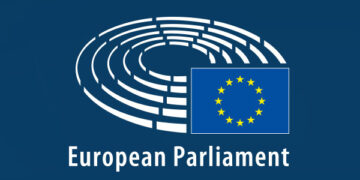The European Central Bank has made a commitment to consider climate change when making monetary policy decisions. But why and how should it do this? Nicolás Aguila and Joscha Wullweber examine how the narratives used by the ECB to justify its approach have changed over time and assess the impact this could have on the central bank’s green monetary policies.
As the environmental and climate crisis escalates, central bankers are increasingly under pressure to take measures to tackle it. Like most central banks, the European Central Bank (ECB) does not have an explicit mandate regarding sustainability. Changes in its policies for tackling climate change therefore generally face accusations of exceeding central bank authority. Central bankers must then legitimise why they are allowed to take green measures (particularly in connection with their existing mandates) and their choice of policies.
Three narratives
In a new study, we analyse 126 ECB board member speeches in which climate issues featured. Our analysis covers the period from January 2018, when environmental and climate issues began to be discussed in relation to the monetary authority’s area of competence, to December 2022. We identify three main narratives used by the ECB about the consequences of the environmental crisis for monetary policy: the first emphasises environmental phenomena as financial risks; the second highlights the green investment or financing gap; and the third focuses on the impacts of climate change on price stability.
These three approaches are not mutually exclusive. Since climate change affects every dimension of the economy, it would be consistent to argue the green transition will affect financial and price stability and at the same time require more financing than is currently available. Moreover, there is no one-to-one correspondence between a specific narrative and a specific policy. Narrative frames function as alternative arguments for legitimising policy proposals and decisions. In other words, different narratives can be used to legitimise a single policy and a single narrative can also be used to legitimise several different policies.
Environmental issues as financial risks
The first narrative – that environmental and climate issues can be viewed as financial risks – gained prominence after a speech by former Bank of England Governor and Chairman of the Financial Stability Board Mark Carney. It was later adopted as the main framing of the Network for Greening the Financial System (NGFS), an international coalition of central banks and supervisors.
Following this approach, ECB board members argue that three types of environmental and climate-related risks (physical, transition and liability risks) could lead to financial instability by triggering a collapse in asset prices and harming debtors’ ability to repay their debts, thus exposing financial institutions to huge losses. The ECB should then intervene as part of its responsibilities pertaining to financial stability. The policies derived from this narrative mostly concern information disclosure, climate scenario analysis and stress tests, prudential supervisory measures, monitoring of the growing sustainable finance market, and protecting the ECB’s own portfolios from these risks (for example, via tilting its asset purchases towards green assets).
The green investment gap
The second narrative highlights the gap between investments needed for the green transition and actual expenditures for green investments. In most cases, however, the observations are not followed by discussion of the ECB’s role in mobilising green finance or specific policy recommendations. Instead of mentioning the central bank itself as a source of direct financing, ECB board members tend to stress the need to support private markets.
In particular, they focus on equity markets, which they hold to be in a better position to provide the kind of financing needed, considering the nature of green projects as capital intensive, long-term, innovative and risky. The fragmentation of national financial markets is depicted as a barrier to the financing of green investments, leading to calls for a “green capital markets union”. In this regard, ECB board members see the ECB’s role merely in an advisory capacity, without deriving any policies.
Climate change and price stability
The third narrative frames climate events as a potential challenge to price stability. ECB board member Isabel Schnabel presents the most comprehensive version of this approach in an examination of three environmental sources of inflation: climateflation (inflation arising from environmental and climate shocks, like natural catastrophes), fossilflation (inflation arising from the dependency on fossil fuels) and greenflation (inflation arising from the adaptation of production processes to lower their carbon footprint).
This narrative allows ECB board members to justify central bank intervention within the ambit of its primary mandate. ECB President Christine Lagarde, for example, asserts that “bringing climate change more fundamentally into our analysis and strategy is not ‘mission creep’: climate change is also a price stability risk”. However, this narrative has yet to materialise in new policy proposals.
Shifting discourse
From the time when climate change first became an issue until 2021, the dominant discourse was the first narrative, which frames climate risks as financial risks. However, the third narrative, which highlights the impacts of climate change on price stability, gained traction over time, becoming dominant in 2022. The second narrative, the green financing gap, recurs throughout the whole period but is never the chief narrative. A comparison of the narratives with actual policy implementation shows that despite the growing relevance of the third narrative, the first has clearly had the greatest impact so far.
It is not unlikely that stronger green monetary policies will be established in the future as the currently shifting discourse may nevertheless be seen as a harbinger of change in monetary policy. However, the shifts we are observing entail taking environmental and climate concerns into account within the scope of the existing mandate while excluding any policies that would transcend the market liberal paradigm or transform the overall institutional structure of the ECB. In this sense, what we are presently witnessing is a new form of market liberalism adapted to climate change, or market liberalism in climate crisis mode.
The dilemma of market liberal central banking involves the recognition by most central bankers that increasing climate change will require ever greater central bank intervention. ECB board members aim to legitimise this intervention by linking it to the ECB’s mandates, in particular its primary mandate. At the same time, the ECB mandate to ensure price stability is embedded in a market liberal institutional structure that continues to believe in self-regulating markets and consequently limits the role of central banks.
This ultimately precludes the possibility of a truly effective and encompassing green monetary policy – in other words, one that questions the principle of market neutrality and demands coordination between monetary and fiscal policy, or even the financing of climate change-relevant government expenditures.
For more information, see the authors’ accompanying paper in the Journal of European Public Policy
Note: This article gives the views of the authors, not the position of EUROPP – European Politics and Policy or the London School of Economics. Featured image credit: T Wilkinson / Shutterstock.com






































Discussion about this post